This is a complete guide on how to start a science blog that will be successful. When you are starting a science blog you can look ahead for fun times writing content on the things you love to do.
One of the best things about blogging is that you can work from home and schedule your own time. Mostly, people start blogging as a hobby, but after a while, you may be surprised at the opportunities you might get.

Starting a science blog is much easier than most people think, thanks to the technology we have today is it so much easier to start a blog without any coding skills required. You will need a computer, internet access and focus for 30 minutes. A small investment that will be very worth much later.
There are 2 ways you can start a science blog, the one is the free method and the second one is to pay and have full control.
The free method is the one we don’t recommend, websites like weebly.com or blogspot.com will allow you to create a page for free like scienceblog.weebly.com. It will be pretty long and not trustworthy with your readers.
The best way to start an own science blog is to get yourself an own domain and hosting that you can have full control over.
1. Getting a domain and hosting
I know finding a good domain name could be tricky, but you can go with something that is easy and catchy to remember. I also highly recommend getting a .com domain. You can even go with your full names like fullname.com or nameblogging.com.
Please avoid numbers, hyphens, and other special characters. Make sure it is unique and to represent your blog highly.
What about hosting?
Getting a hosting that will have great loading time and uptime is crucial to run a successful science blog online. Studies have shown that if websites load more than 3 seconds, visitors usually leave. Wonder where you can buy a domain and host at the same place?
Usually, a domain name could cost up to $18 per year, while a web hosting that can store your website data could cost $10 per month. I know that this may be a lot of money for beginners, that’s why I have a very special deal for you.
For as little as $2.95 per month, you get a FREE domain name for one year, FREE SSL certificate that protects visitor data, amazing security features with 24/7 educated customer support with 60% OFF on hosting. This is a deal that you don’t want to miss.
When you open the BlueHost‘s homepage, click on Get Started.
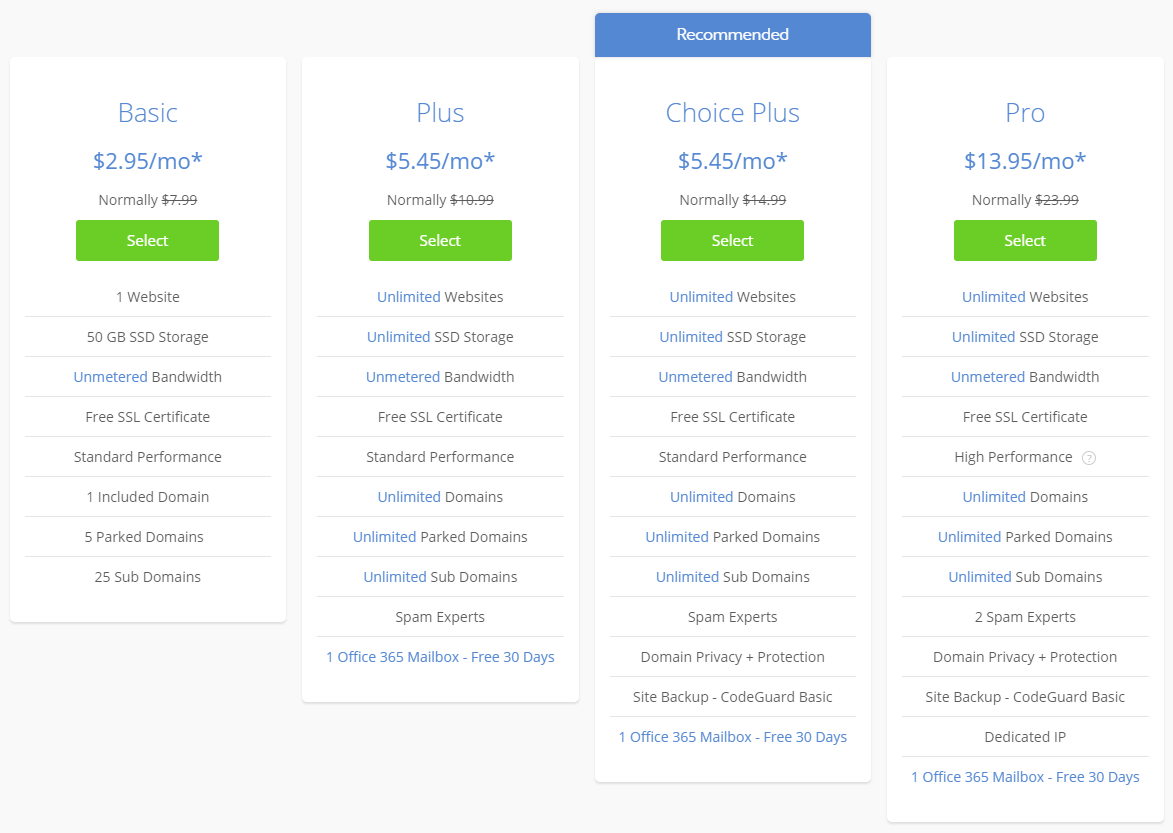
Starting with the Basic Plan
The best plan for you to start a science blog is the Basic plan. You will get a 50 GB of SSD storage with unlimited bandwidth, and also you can always upgrade to a bigger plan once you need more resources for your blog without any downtime.
Getting the 36-month deal will give you the lowest price of hosting, and you don’t need to worry about hosting bills in 3 years. Also, you can pay for one or two years, but the price will be slightly higher.
Another great news is that Bluehost offers a 30-day money-back guarantee, and you can consider it as a trial if you are not happy with them. This is a phenomenal deal to start a science blog journey.

You can type the domain name you like to name your science blog, for example, fullname.com or namescience.com, or you can skip to add it later.
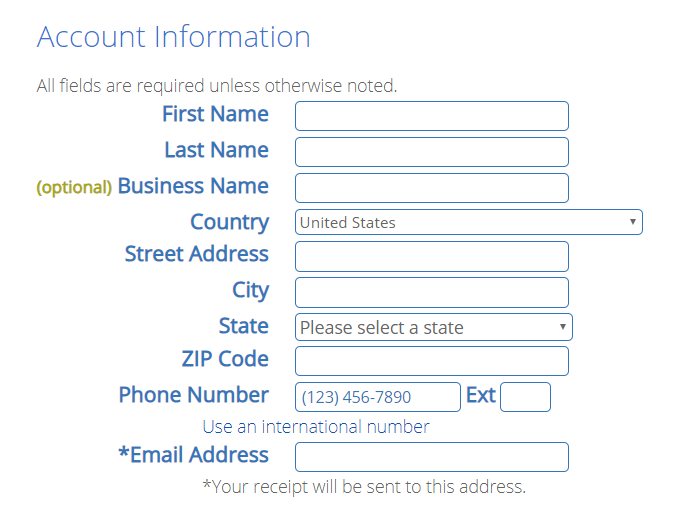
You need to fill your personal information. You can get domain privacy to protect your own data. It will avoid getting annoying calls from people that wanna help you something with your blog.
Bluehost information will be public and not yours. Also, if you are on a budget, you can always get it later.
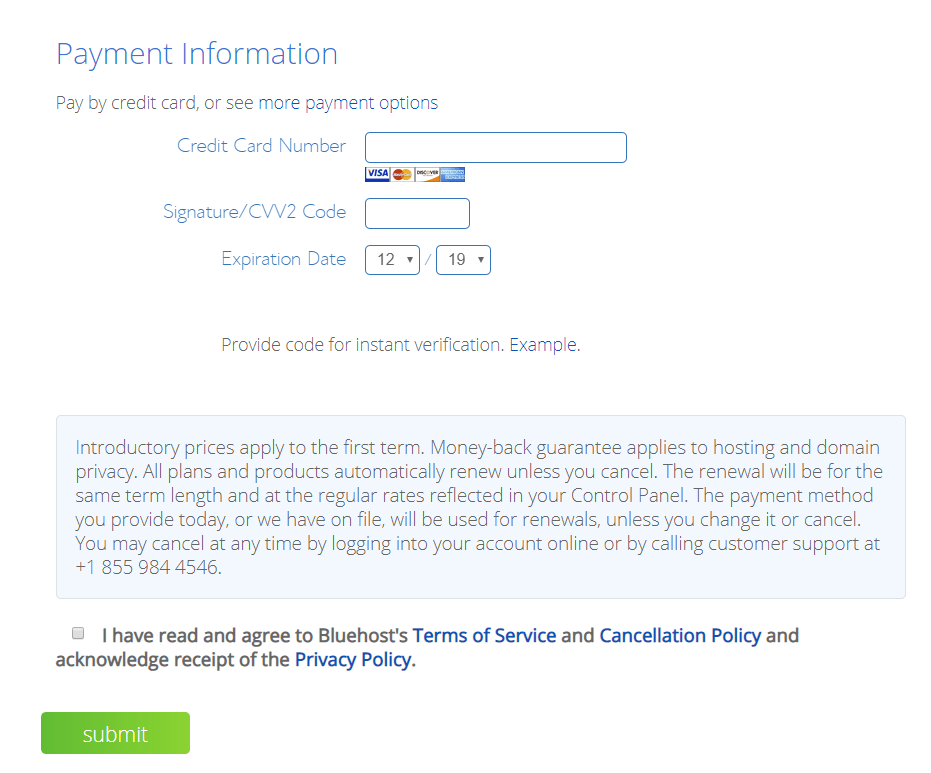
Tick the box that you are agreeing with BlueHost’s terms of services and hit the green Submit button.
Congrats on learning how to start a Science Blog!
Click here if you haven’t started already.
The next step is installing WordPress (CMS), and on BlueHost is much easier.
Disclosure: Please note that some of the links are affiliate links and at no additional cost to you, I’ll earn a commission. When you purchase hosting using my affiliate links, they compensate me, which helps make this guide free of charge to you and ensuring you get the best possible deal. I only recommend services that I’ve personally used and stand behind.
2. Installing WordPress
After you make the payment, pick some basic theme, and click on start building.
Bluehost has a lot of one-click installers, WordPress is user-friendly, and you can optimize your blog posts so much easier and much faster as well.
It takes about 1-2 minutes to install WordPress, once your done, you need to log in. Type on your address bar the following: domain.com/wp-admin. For my blog, would look like randomboss.com/wp-admin.
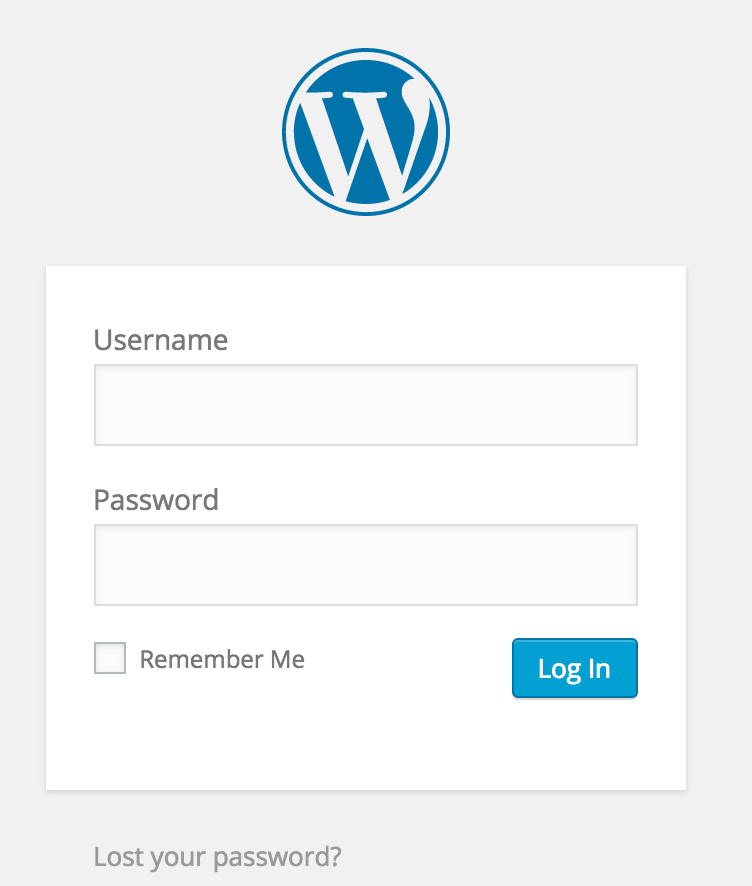
The first thing you should change are permalinks. Head over to Settings -> Permalinks, and change them to Post name. The science blog you just started will be much more user-friendly. Every one of your readers will thank you for shorter URLs and google also.

One example could be yourblog.com/science-post is better than yourblog.com/2025/01/01/science-post.
3. Install Theme and Plugins
You need to have a good theme that will make your blog faster and easier to navigate within. You can search for a simple theme that will be less coded so it can perform better.
Search for the most popular themes on Appearance -> Themes -> Add New. These themes are free to install, but some of them have PRO features, if you really like a certain theme, then upgrade to unlock its features.
There are also paid themes, which are extremely easy to install, I highly recommend StudioPress WordPress themes. These themes are up-to-date, super lightweight, and beginner-friendly as well. These themes usually cost around $25-250. You check the best StudioPress themes here.
Plugins
You can find Plugins on the left side, then point at it and then click Add New.
You need to install the right plugins to help your science blog to perform better for readers and for the search engine as well. Always install lightweight plugins to help your loading speed.
- Rank Math: The perfect plugin to optimize your On-Page SEO.
- WP Fastest Cache: This is a cache plugin to clear cache and minify CSS/JS.
- Grow by Mediavine: It allows your readers to share on social media.
- Block Bad Queries (BBQ): Stops malware.
- WP Forms: This is a contact form plugin.
- Autoptimize: Great plugin to optimize CSS, JS, and your images for fast loading speed.
- Self Hosted Google Fonts: Only needs enabling.
- WP-Optimize: Database cleaner.
- WP-Rocket: If you wanna get the WP-Rocket plugin, you can avoid installing WP Fastest Cache, WP-Optimize, Autoptimize, Async JavaScript, CDN Provider, HeartBeat Control, and many more. It is one of the best plugins at the moment with Rankmath, you can get the plugin here.
The WP-Rocket plugin is paid, all of the above are free. Some of the plugins have PRO versions but will do the job just fine for free as well. I highly recommend getting the WP-Rocket if you have the budget.
Check my results on GTMetrix:
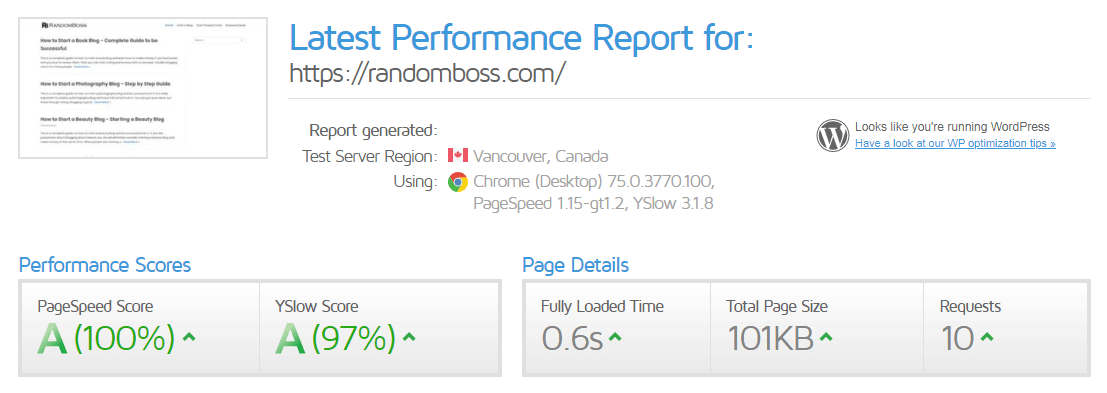
4. Adding Pages
This is also important to build trust with your readers, and you need to add only a few pages, like:
About page
You can present who you are and how you got into science blogging. You can maybe reveal yourself and put your social media accounts here as well.
Contact page
Once you get more popular, people will wanna work with you. Install the WPForms plugin to create a simple contact page.
When you open the interface, then point at Simple Contact Form, you will see a button Create a Simple Contact Form.

Now SAVE the contact form. Now you can go to Pages -> Add New.
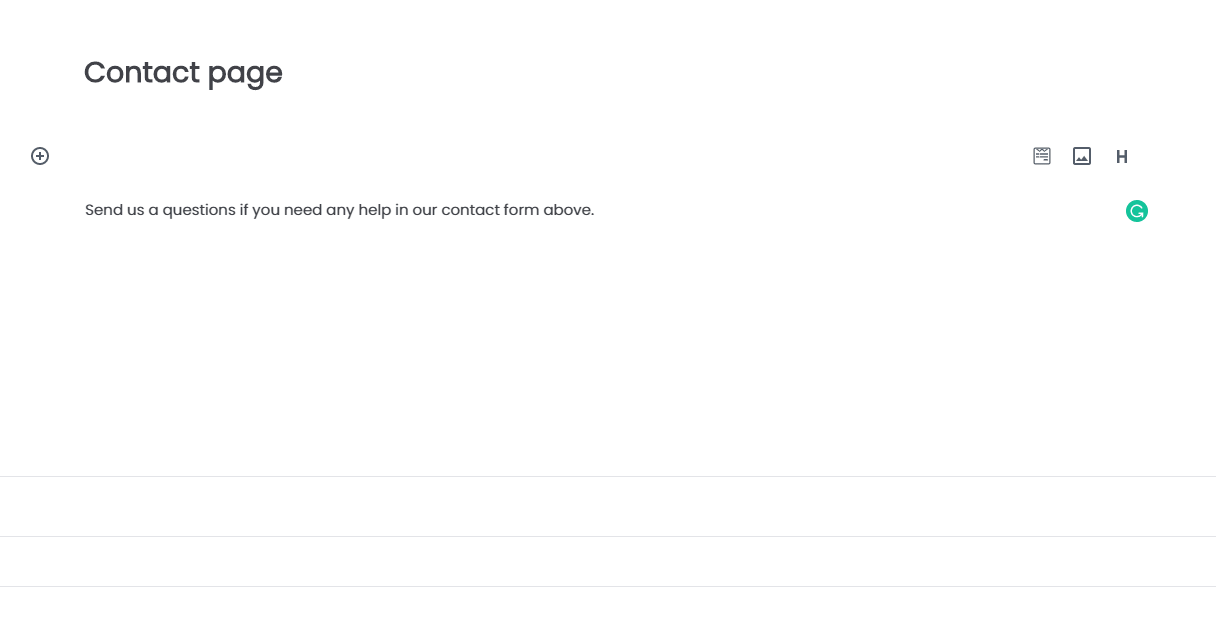
This is the easiest way to create a contact form when you first start a WordPress blog.
Copyright page
If you don’t want your content stolen, then simply write a simple page that all of your content is yours and no one can steal it without permission. Also, you can install the WP Content Copy Protection plugin to disable right-click.
5. Writing your first post
Very important to be yourself, make sure to make powerful headlines and you something like this to help you get high headline quality score. Don’t make them clickbaity, just make sure they reflect on the content you write.
You can use free-royalty images from Unsplash, Pixabay.
It is important to do your research, you can use SEMRush for finding a keyword for each of your posts. You can search for low competition keywords when you first start, 500-1000 search monthly with low competition is great.
Blog Topics
It is very important to be consistent when you are first starting. Make a schedule on how much you wanna publish per week and stick with it for at least 3-4 months. After a while, you will start seeing visitors coming in.
To write your first post, point at Posts at the left side of the dashboard and click Add New.
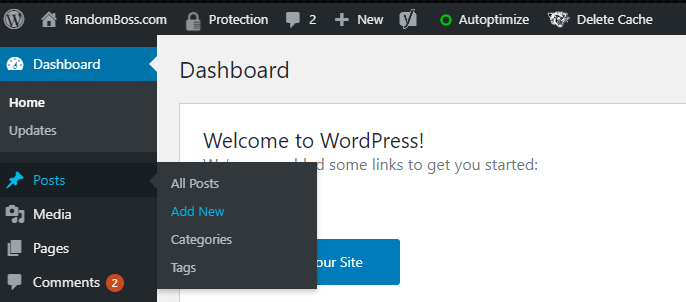
You can write your headline and blog content on the following screen.
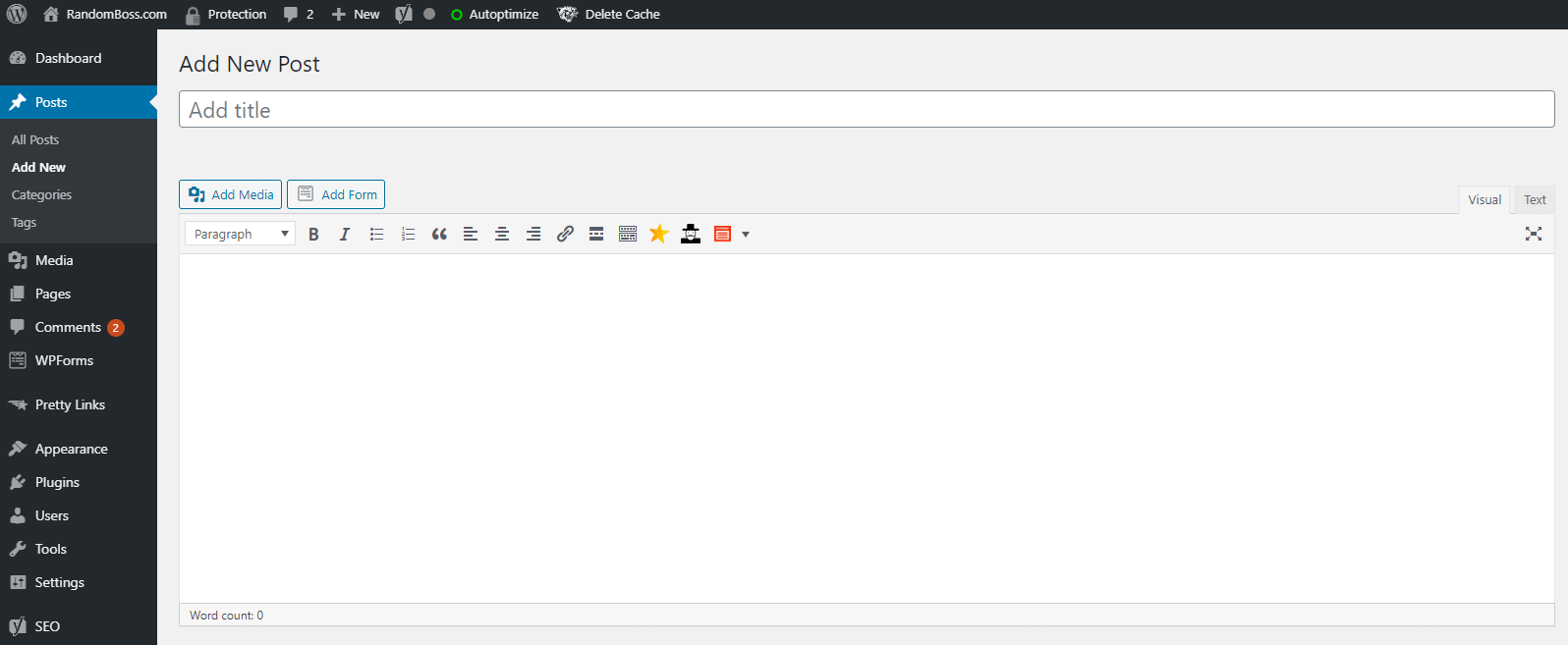
After you have written your post, then the next thing is to create a category for certain topic.

Click on +Add New Category to add a new category, and depending on what your content is about, you can create multiple depends on what topics you write content about, then tick the box so it can be under that category so now you can hit Publish.
Note: Only do it for those who don’t have a target category.
You can also install the Classic Editor plugin to easier write your posts.
Congrats on learning How to Start a Science Blog successfully!
6. Monetizing
The good thing about blogging is that there are a lot of ways you can monetize it. You can monetize your science blog with display ads, affiliate marketing, Amazon associates, membership, courses, selling physical products, selling ebooks, and many more.
Display ads and affiliate marketing are one of the most profitable for bloggers and depend on what kind of traffic you get, I’ve seen average earnings on 40$ per 1000 visitors. If your blog gets 50,000 visitors a month, that’s around $2,000 only from display ads.
All you need to do is to start the blog and write content, promote it on your social media, and visitors will come. Google will start ranking you for low competition keywords once you have good informative posts. If you wanna hunt for low competition keywords, check SEMRush, it is the best for bloggers.
How to start a Science Blog – Conclusion
- Pick the domain name
- Get Hosting (BlueHost)
- Install WordPress
- Install Theme and Plugins
- Add a few pages
- Add your first blog post
- Start Monetizing
- Congrats!
Hopefully, this blog post on how to start a science blog helped you start. Blogging is really great method to start your online journey and write on topics with your own views of things.
Starting a science blog is one of the most interesting topics that you can write and meet similar-minded people. You can work on your own time and schedule as well.
If this post helped you learn how to start a science blog, please share it on your favorite social media down below. For more tips on blogging, click here.
